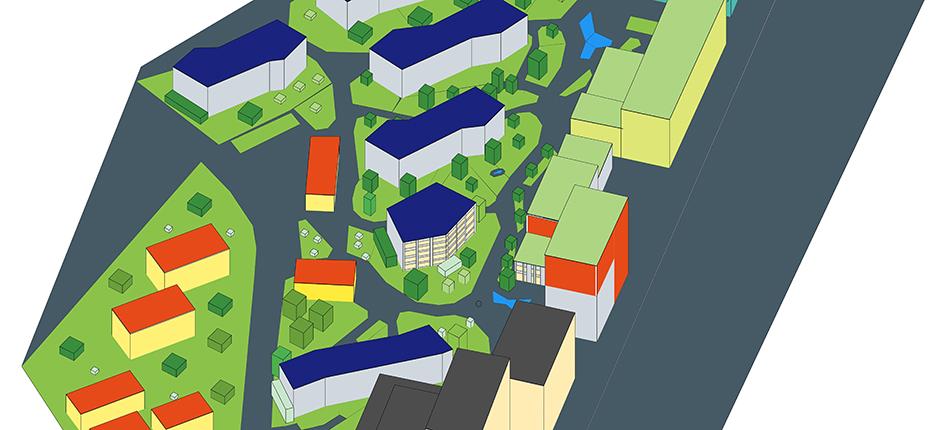A research team from the Lucerne University of Applied Sciences and Arts (HSLU) has created an interactive neighborhood climate model. According to a press release covering the research project, this tool can quickly provide planning-relevant data with regard to the microclimate of an existing development and planned projects. Moreover, it can be used from the outset of the design planning process.
Warmer summer temperatures increase demand for urban planning solutions to combat heat build-up in buildings and neighborhoods. According to the press release, heat islands are avoidable, but the key to this is positioning the building in such a way that it is attuned to the environment. Moreover, the choice of materials for facades and outdoor areas, green areas and clever use of shaded areas are also important aspects to consider. The effects of these factors should be known and taken into account at an early stage of the planning process. Existing models have so far prevented this, as these entailed substantial costs and required a significant amount of time.
The newly created instrument is limited to phase-specific information. This means that insights with regard to the microclimate are available in a matter of seconds. Information about buildings and their positioning, the materials used, and the type and position of green spaces and trees plays a key role in preventing heat islands in buildings and cities. However, as part of a competition procedure, a wide range of other requirements are included in addition to the district climate, as the simulation expert and HSLU professor Markus Koschenz states in the press release. With the new tool, planners will in future have a physical model at their disposal, which, in a matter of seconds, is able to calculate the effects of solar radiation, shade, heat storage properties of the materials, air flow, vegetation and time of day, Koschenz concludes.






